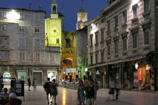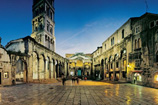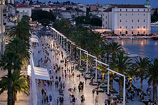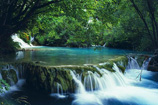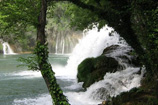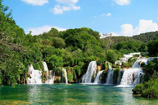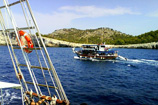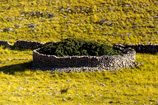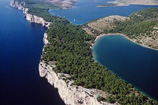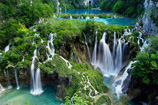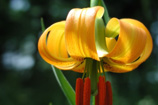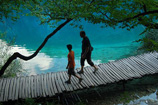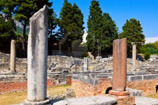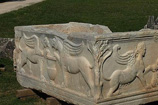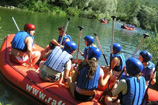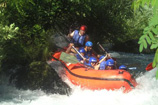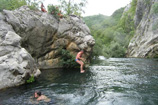Excursions
About the city of Split
Split is the economic and administrative center of Middle Dalmatia, with about 200,000 inhabitants. The site was first settled when, at the end of the third century AD, the Roman Emperor Diocletian built his palace here. Many of Split's historical and cultural buildings can be found within the walls of Diocletian's Palace. In addition, numerous museums, the National Theatre, and old churches and other archeological sites in the Split region make it an important cultural attraction.
National park Krka
National par Krka covers the area along the flow of river Krka, which springs three kilometers northeast of Knin and it passes through the deep and vivid 75 km long canyon forming deafening falls - Krčić, Risnjak, Miljacka, the Roški slap Falls (26) and the famous Skradinski buk Falls (the Krka Falls 46m), the greatest calcareous travertine barrier in Europe. The lower Krka flows through Prukljansko jezero lake and flows into 9 km long bay - Šibenski zaljev. In NP Krka, two cultural and historic monuments stand out: the Franciscan monastery on the island of Visovac and the Krka monastery and the most important town in the group of picturesque towns on the park area is Skradin - the town protected as a cultural monument.
National park Kornati
In the central part of Croatian Adriatic Sea, about 15 km to the west from the city of Šibenik, 7 km to the southwest from the island of Murter, or 15 km to the south from the city of Zadar, there is amazing group of islands named Kornati archipelago. Beauty and singularity of the archipelago moved authorities in 1980 to proclaim a bigger part of that area national park.
National park Plitvička jezera
Nowadays, The Plitvice Lakes lie on one of the most important traffic routes in Croatia. In this “Devil’s Garden”, nature gave man a completely different garden: a garden of magnificent phenomena of nature. Already in 1949, were the Plitvice Lakes given a permanent status of a National Park. In 1979 - UNESCO put the Plitvice Lakes on the List of World’s natural heritage.
Solin – The city of rich cultural heritage
Colonia Martia Iulia Salona, was the title of the ancient Roman capital of the province of Dalmatia. It was established in a sheltered bay, at the mouth of the river Jadro under the monutain of Kozjak. The place was populated by the native tribe of Delmati and by Greek merchants who settled there before the arrival of the Italics and Romans. After the barbarian invasions, Croats settled in part of the ruined and abandoned Salona. Croatian rulers built new churches on Our Lady's island and along the river Jadro, where the centre of the Croatian Solin was established
Rafting
A 3-4 hour adventure on the river Cetina with experienced skipper, could make your vacation unforgettable. Children aged 10 and up can also participate but only if accompanied by their parents. Rafting on the river Cetina lasts for about 3-4 hours on a 9 km long route which ends in a restaurant called Radmanove mlinice. A guide is assigned for each crew. He or she will provide you with the necessary equipment, which includes a paddle, a helmet and buoyancy aid. You will be also given a quick tutorial for basic rafting skills. This is a pool drop river and on the scale of 1-6 it's classified as a 2-3, which means that the rapids are easy and medium . Here you will see nature in its best, beautiful lakes, vegetation cliffs, waterfalls, caves... Price - 200 kn (27€) per person




